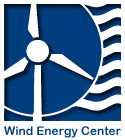The Role of Foundation Damping in Offshore Wind Turbine Dynamics
The load amplification due to near resonant conditions causes offshore wind turbines (OWTs) to fall subject to greater demands and accelerated cyclic fatigue. Damping is most important factor in counteracting amplification when turbine dynamically loaded near resonant frequency, but the contribution from foundation damping is not included in design guidelines. This paper presents a parameter study to evaluate effect of increased damping on load maxima and fatigue damage accumulation in variety of wind, wave, and operating conditions. It was found that increased damping reduced resultant moment amplitude up to 17% and fatigue damage up to 69% in parked and feathered cases. Increased damping has the greatest effect on moment and damage reduction in parked and feathered cases because lack of aerodynamic damping from spinning blades allows foundation damping to play a larger role in total system damping. Incorporating foundation damping in design guidelines may lead to more efficient structures, which is a crucial factor in overcoming the high cost barrier associated with offshore wind development.
Floating Offshore Wind Turbine Aerodynamics and Optimization Opportunities
Floating offshore wind turbines experience significantly more complex aerodynamic loading due to platform motion. This requires more sophisticated analysis techniques and should be considered throughout the design process of floating turbines.

